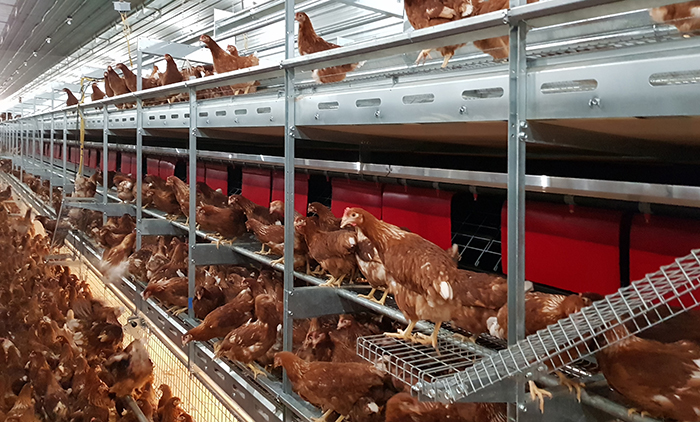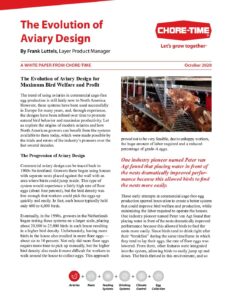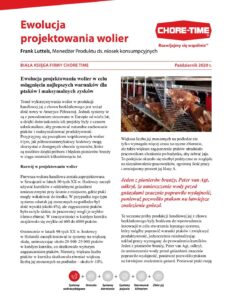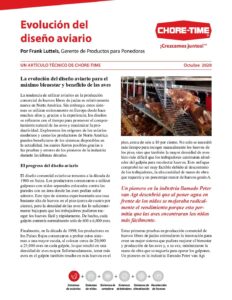White Paper:
Evolution of Aviary Design
The Evolution of Aviary Design for Maximum Bird Welfare and Profit
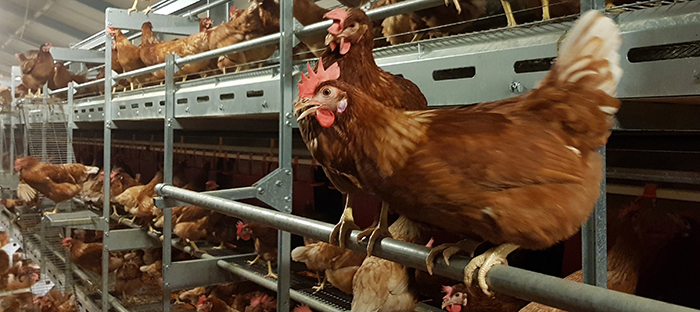
The trend of using aviaries in commercial cage-free egg production is still fairly new to North America. However, these systems have been used successfully in Europe for many years, and, through experience, the designs have been refined over time to promote natural bird behavior and maximize productivity. Let us explore the origins of modern aviaries and how North American growers can benefit from the systems available to them today, which were made possible by the trials and errors of the industry’s pioneers over the last several decades.
The Progression of Aviary Design
Commercial aviary design can be traced back to 1980s Switzerland. Growers there began using houses with separate nests placed against the wall with an area where birds could jump inside. This type of system would experience a fairly high rate of floor eggs (about four percent), but the bird density was low enough that workers could pick the eggs up quickly and easily. In fact, each house typically held only 600 to 6,000 birds.
Eventually, in the 1990s, growers in the Netherlands began testing these systems on a larger scale, placing about 20,000 to 25,000 birds in each house resulting in a higher bird density. Unfortunately, having more birds in the house also resulted in more floor eggs — about six to 10 percent. Not only did more floor eggs require more time to pick up manually, but the higher bird density also made it more difficult for workers to walk around the house to collect eggs. This approach proved not to be very feasible, due to unhappy workers, the huge amount of labor required and a reduced percentage of grade-A eggs.
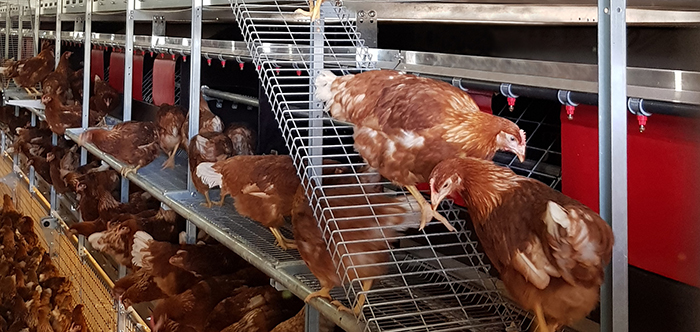
One industry pioneer named Peter van Agt found that placing water in front of the nests dramatically improved performance because this allowed birds to find the nests more easily.
These early attempts at commercial cage-free egg production spurred innovation to create a better system that could improve bird welfare and production, while minimizing the labor required to operate the houses. One industry pioneer named Peter van Agt found that placing water in front of the nests dramatically improved performance because this allowed birds to find the nests more easily. Since birds tend to drink right after their “breakfast” during the same timeframe in which they tend to lay their eggs, the rate of floor eggs was lowered. From there, other features were integrated into the system, allowing birds to easily jump up and down. The birds thrived in this environment, and so began the era of modern multi-tier aviaries –also referred to as European-style or open aviaries.
Today, multi-tier aviaries, such as Chore-Time’s VIKE Aviary Systems, include three main levels. A bottom level allows birds to move around, peck and scratch. A separate nest level with water encourages hens to lay eggs there, and a top level with perches provides an ideal sleeping area. In this type of system, birds tend to naturally spread out, which helps to eliminate hot spots within houses. Multiple aviary styles are available, each with different levels to accommodate the various needs of birds, such as eating, drinking and laying eggs, as well as natural bird behaviors like dust bathing and resting.
A bottom level allows birds to move around, peck and scratch. A separate nest level with water encourages hens to lay eggs there, and a top level with perches provides an ideal sleeping area.
These aviaries also provide a very hygienic environment to help birds thrive, and they minimize the labor required to clean the houses. Furthermore, egg quality is optimized because nests and eggs are kept cleaner in these systems, so growers are often able to achieve more grade-A eggs per hen.
Combination Systems
Multi-tier aviaries weren’t the end of the evolutionary chain, however. In the early 2000s a group pursued the design of a new system to hopefully improve upon multi-tier aviaries. Imagined as an enriched cage without doors, these combination, or “combi,” aviaries were developed with several goals in mind:
- Reduce the importance of pullet training
- Close birds in for the first weeks after entering the aviary
- Minimize movement to lessen feed consumption
- Reduce management needs
Unfortunately, the theory behind combination aviaries did not hold up as well as planned, and the ability to reduce feed consumption by about one percent was the only goal achieved. Otherwise, growers found that pullet training is just as important in these systems. Next, closing birds in caused them to forget much of their training and also resulted in ventilation issues. Additionally, combination systems actually increased the amount of management needed in houses because birds do not naturally distribute themselves as well in this type of system.
While combination aviaries are still available today, they have lost market share to multi-tier aviaries. In fact, European growers have stopped using them almost completely, not only due to their performance shortfalls, but also because these solutions are still largely perceived by the public as caged systems.
The cage-free trend will continue, due to ever-increasing consumer demand, and so will the improvement of aviary design. So far, however, multi-tier aviaries have proven to be the strongest link in the evolutionary chain of systems that meet cage-free requirements. They have been developed through years of experience in observing natural bird behaviors and have been proven through strong return on investment and healthy flocks.
